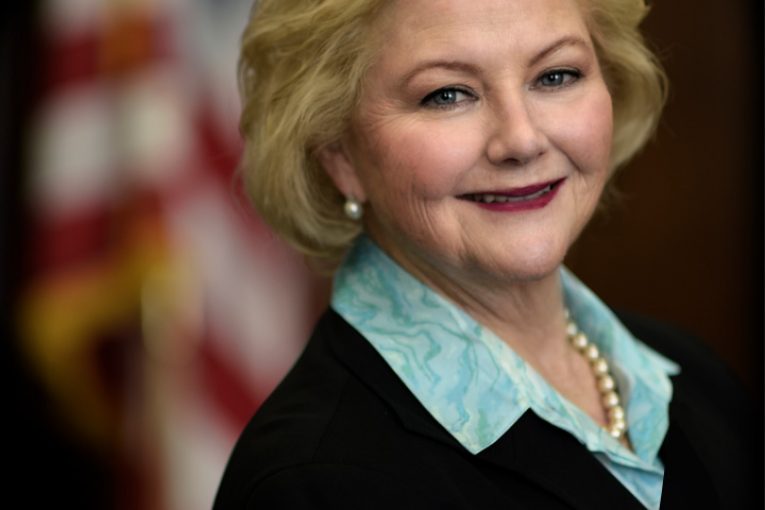

By David M. Greenwald
Oakland, CA – A report released this week found that policies and practices of the Alameda County District Attorney’s Office, under the leadership of Nancy O’Malley, lead to overcriminalization, needlessly cost the county money, and promoted mass incarceration, with devastating impact on Black and Brown communities.
The report was compiled over two years of data collection by the ACLU of Northern California and the Urban Peace Movement and shines a light on the Alameda County DA’s Office and its charging policies.
“The Alameda County District Attorney plays an outsized role in maintaining mass incarceration, fueling racial disparities and failing to hold police accountable,” said E.J. Pavia, Campaign Director with Urban Peace Movement. “We are calling on the Alameda County District Attorney to change its internal policies and practices. We are also calling on Alameda County residents to hold the office accountable for its actions.”
EJ Pavia said that, as community members, they wanted to know whom the local DA was charging and whether “there were any disproportionate numbers in their data” as well as their “policies especially around alternatives to incarceration.”
He explained, “There is a lot of data that incarceration does more harm than good in our communities.”
One of the surprising findings in the report is that, despite the reputation of Alameda County as being a high crime area, “[o]ver six in 10 of all charges the Alameda County DA brought against  adults were low-level offenses that either should have been directed to diversion programs or not charged at all.
adults were low-level offenses that either should have been directed to diversion programs or not charged at all.
“In the report, we identify a list of charges that we feel are so low level that they should just never bee charged at all,” Pavia explained in a phone interview with the Vanguard on Friday. “They are so low level that public dollars should not even be wasted on… (the court time).”
In addition, he explained there are other offenses “we feel should always be diverted” and “we feel there are so many alternatives to incarceration that have so many inclusionary criteria that it seems difficult for even a prosecutor to offer it to somebody,” Pavia added.
O’Malley, he explained, promotes her creation of alternative programs and courts.
“While that may be true, the data shows that only five percent utilization (of diversion programs) from 2017 to 2018,” he added. “For us it’s really important to make sure that people are benefiting from those programs and they’re not going to waste.”
While the media focuses on “serious violent offenses,” Pavia explained, “[w]hat the data shows us is that’s really only seven percent of all their work.”
He added, “That means that the rest of their work, 93 percent, is really doing something other than the horror stories that you hear in the media.
“For us that was really important to see,” he said. “This tells a different story.”
This is a story of addiction, housing insecurity, mental issues.
“This is really what they’re spending a lot of time prosecuting,” he explained.
Yoel Haile, Criminal Justice Program Manager at ACLU of Northern California, noted that the six in 10 of all charges constitute about 48 percent of all cases. These do include some more serious charges like robberies and burglaries as well as assaults that result from a fight.
But he said, “Those can be very good candidates for the sort of justice diversion programs (they’re promoting).”
Haile gave the example of a man who was battling addiction, broke into a home when no one was home. He explained that he was out of custody, and they attempted to get him diverted into a program to deal with his addiction, and instead he was given a prison sentence and strike.
“The list of low-level offenses that we put together does include some serious felonies where we think that they can be diverted,” he said, describing cases like a robbery with no weapon used and no one hurt, or the burglary where no one was home. “Those are things that are serious but could be diverted.”
He cited a program out of Brooklyn where those cases are diverted into a restorative justice program.
Among the other findings in the report, the Alameda County DA’s Office opposed release of incarcerated people in 70 percent of all parole hearings it attended, without documenting any justifications for taking those positions.
The report also finds that the office had internal guidelines instructing its prosecutors to leverage immigration consequences in order to seek longer probation or jail time during plea negotiations from non-citizens until March 2020.
Finally, which seems to be a common problem throughout the DA’s office, the office kept and provided poor quality data and had no policies regarding data integrity.
According to the report, Alameda County data shows that people of color have much higher jail and prison incarceration rates than whites.
The report finds, “Black people were almost nine times as likely as whites to be incarcerated in jail, and over four times the county average, while rates for Latinx people were about twice the rate of whites.”
According to the report, “The disparities provide evidence of discriminatory policing and prosecution.”
The report also makes recommendations for reform in policies regarding charging decisions, immigration, police accountability, diversion programs, parole and sentencing, and data tracking.
Recommendations include:
- Create a policy to never charge youth as adults.
- Reduce and eliminate excessive penalties by no longer seeking enhancements, and no longer charging under the three strikes law, life without the possibility of parole and death sentences.
- Continue to work with community partners to implement and enforce new policies that mitigate and eliminate the immigration consequences of criminal convictions.
- Create an internal policy around police-relevant practices, including: investigating and charging police use-of-force incidents, records access under SB 1421, making the “Brady list” public (list of unreliable officers not to be used as witnesses by the DA), and pledging to never receive campaign donations from law enforcement unions.
- Increase access to diversion programs and collaborative courts.
- Institute a policy where the Alameda County District Attorney’s Office only involves itself in the parole process to support the release of individuals, much like the Los Angeles DA’s new policy.
“Prosecutors wield tremendous power in the criminal justice system and in our communities,” said Yoel Haile said. “With this report, we aim to show how the Alameda County District Attorney can better align its practices with public support for justice reform, center the perspectives of system-impacted people and redirect public spending away from costly over-prosecution and over-incarceration. Alameda County residents should be aware that a District Attorney is an elected position, whose practices should reflect the values of the community to end mass incarceration.”
EJ Pavia explained that this is such a business office that by getting into the courts and watching court procedures, it is “really helping pinpoint all sorts of decisions that are being made.
“There are a handful of people making charging decisions,” he said. “These are the people that need to be held accountable by the public.”
“It’s helping us understand that while DA O’Malley of course sets the tone for the office, oftentimes those stated priorities aren’t translating into what’s happening day to day,” he said.
—David M. Greenwald reporting
To sign up for our new newsletter – Everyday Injustice – https://tinyurl.com/yyultcf9
Support our work – to become a sustaining at $5 – $10- $25 per month hit the link:






After reading this article, it makes me want to buy a gun.